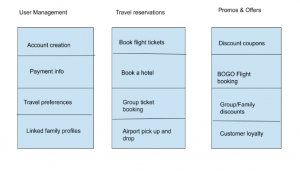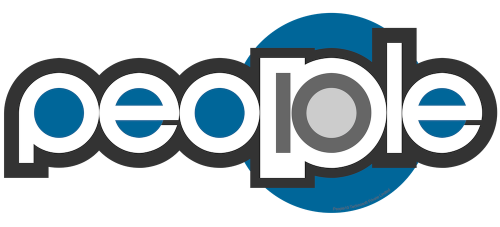A Product Backlog is an organized list of everything known to be required in a product. If any change is needed to be made in the product, the single source of requirements followed is the product backlog.
In order to make your release and iteration planning easier during the development process, you need to create a well-prioritized agile backlog. It’s similar to prioritizing your shopping list, you pick the items you need on an urgent basis and leave the rest for your next shopping spree. Similarly, an agile backlog prioritizes the work that needs to be completed by the development team based on the product roadmap.
The feature which needs to be implemented first is placed at the apex of the backlog while the feature with the least priority is placed at the bottom. It should be well prioritized to make release planning and iteration planning convenient. It distributes what all things your team needs to work on, by giving a time breakup. So, you can set the right expectations for the stakeholders, like how much they can expect from you in a sprint. As per their capacity, the development team takes tasks from the backlog by following Scrum methodology.
Scrum development adheres to the principles mentioned below:
- Scrum methodology has 3 cornerstones – transparency, inspection, and adaptation.
- Scrum promotes self-organization and offers freedom to employees to make their own work decisions.
- Scrum technique requires collaboration, articulation, and awareness for value creation.
- In scrum development, priority depends on business value.
- Due to time crunch, teams need to make the most of the available time. This improves the team’s efficiency and fosters speedy development.
- Each sprint is iterative development and caters to addressing customer’s requirements, and product suggestions.
The two ‘Rs’ – requirements and roadmap play an important role in a product backlog. The roadmap initiatives can be divided into various epics, and every epic has different user stories and requirements. When you need to structure your work, you can use these popular agile tools – epics, stories, initiatives, and themes.
Stories
Also known as ‘user stories’, are requests from the standpoint of the end-user.
Epics
A huge amount of work that can be split into short stories.
Initiatives
An array of epics that lead to a common goal.
Themes
Huge areas of focus encompassing the entire organization.
Let’s take a glance at our client from the airline’s domain. We broke down the initiatives into epics, like:

What will influence a product owner’s prioritization?

Image credit: https://www.atlassian.com/software/jira/agile
Below are the factors in detail:
- Impact on the number of users
While prioritizing, it is essential to analyze the impact of any feature on the user base. Suppose for an e-commerce company, the most often browsed content by existing users will be crucial to determine their priority order in the future.
- Customer satisfaction
Persona creation is very important as we must be aware of our end beneficiaries. It will be great if you know the features your prospective users want first, and you will end up building features that may uplift the customer experience.
- Business Value
Despite building features one after the other, you might not be able to add value and live up to customer expectations. To avoid the fiasco of delivering irrelevant product features, it is essential to prioritize those features which add business value and align with the client’s business strategy.
- Reduce unnecessary cost
Rather than prioritizing large features, it is beneficial to prioritize the small ones, as it will alleviate the implementation costs and cost of delay.
- Lower implementation risk
Some backlogs have low impact and low risk while certain high-risk product backlogs need to be prioritized early to lower implementation risk and save cost.
Difference between Product & Sprint Backlog
Any Product Backlog must be organized and tasks should be placed in the order of priority for completing the project. It should highlight the team’s vision, the end goal and value addition for a customer. During the sprint planning stage, a sprint backlog and product backlog are created. While collaborating, the team estimates the tasks that need to be moved from the product backlog to the sprint backlog, depending on their estimated velocity.
Sprint can be defined as a timeboxed iteration within a cycle of continuous development. In a Sprint, the amount of work planned needs to be completed on time and made available for review. An agile sprint can last from anywhere between 2 to 4 weeks. Sprint planning is a collaborative process between the PO (product owner), scrum master, and the development team. Here two main questions are addressed: “What work can be done within this sprint and how can it get done?” The product owner deliberates about the sprint objective that must be achieved and items in the product backlog items that need to be completed. The ‘tasks’ chosen and the plan to get them ‘done’ is referred to as the sprint backlog. During a sprint, the team discusses the daily progress in the scrum meeting or standup. Post each sprint completion, the team showcases what items have been completed in the sprint review. Completing your sprint cycle by identifying areas where you can improve for the upcoming sprint, is termed as the sprint retrospective.
Product Backlog Refinement
In agile terminology, a systematic review of the product backlog is referred to as ‘backlog refinement.’ ‘Product Backlog Refinement’ is a way to add detail, estimate, and sequence to items mentioned in the Product Backlog. It implies that product owners must review their previous backlogs before planning the next iteration to maintain prioritization. Also, they should ensure that feedback received in the previous iteration is duly implemented.
As the backlog grows with time, product owners need to break items into short-term and long-term. This is a continuous process where the PO (Product Owner) and development team collaborate on the Product Backlog items in detail.
Conclusion
A product backlog serves as the basis of iteration planning. The backlog includes everyone’s work items: user stories, design changes, bugs, customer requests, technical debt, etc. So basically, the product owner must prioritize what all items need to be completed first.
For any questions regarding planning product backlogs, feel free to contact us at info@people10.com.




